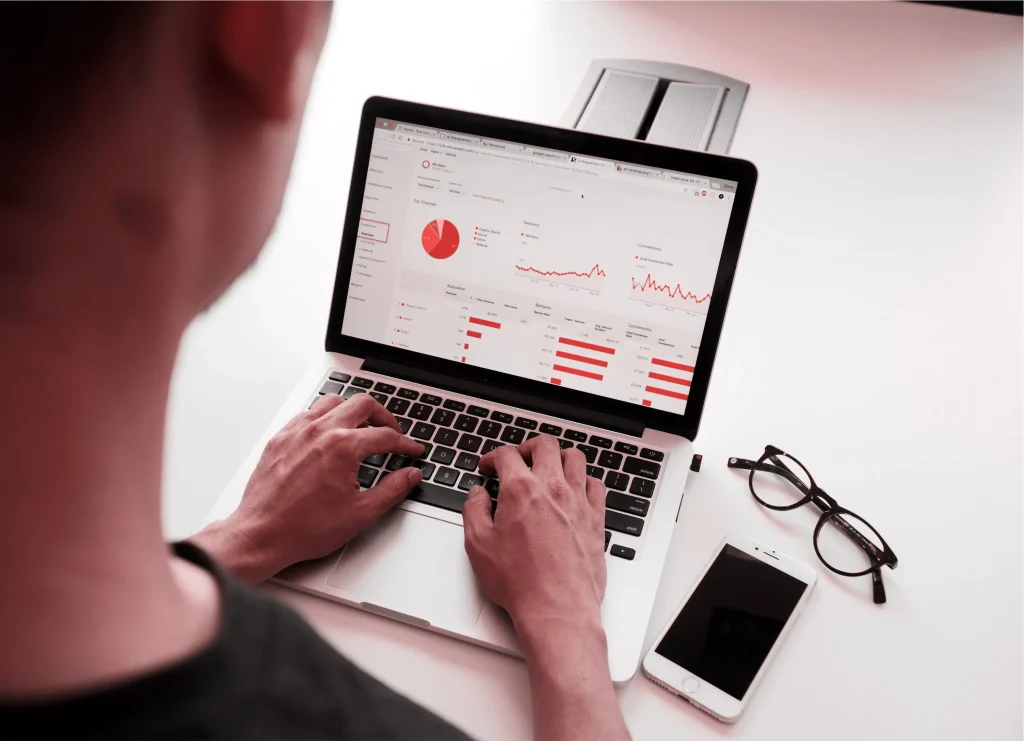In today’s rapidly evolving educational landscape, where student success is paramount, higher education institutions are prioritizing the implementation of strategies to maximize student outcomes. Recognizing the importance of understanding students’ unique needs and tailoring their learning experiences, institutions are turning to data analytics as a transformative solution. Data analytics in higher education empowers institutions to unlock valuable insights from vast amounts of data, enabling them to make informed decisions that positively impact student success.
Through data analytics, institutions can delve deep into student data, including demographics, academic performance, engagement levels, and institutional operations. This comprehensive understanding of the data allows institutions to identify patterns, correlations, and trends that inform strategic interventions. By pinpointing at-risk students and providing timely interventions, institutions can proactively address potential obstacles to student success. Personalized learning experiences can also be developed through data analytics, catering to individual students’ strengths, weaknesses, and learning preferences.
Understanding Data Analytics in Higher Education
Data analytics, in the context of higher education, involves the process of examining vast amounts of data to uncover patterns, correlations, and insights that inform decision-making and drive improvements. In higher education institutions, data analytics encompasses the collection and analysis of various types of data that are crucial for understanding student success and institutional effectiveness.
Student data is a key component of data analytics in higher education. It includes demographic information, enrollment data, course grades, and engagement metrics. By analyzing this data, institutions gain valuable insights into student characteristics, performance, and behaviors, allowing them to identify at-risk students, tailor interventions, and improve student retention and engagement.
In addition to student data, institutional data plays a significant role in data analytics. This type of data encompasses information related to admissions, finances, resource allocation, and student support services. By analyzing institutional data, institutions can make data-informed decisions regarding strategic planning, resource allocation, and the development of support services that enhance student outcomes.
Furthermore, learning management system (LMS) data is another important source of information for data analytics in higher education. LMS data tracks student activity within the digital learning environment, capturing course interactions, assessment results, and engagement metrics. Analyzing LMS data provides insights into student learning behaviors, preferences, and performance, enabling institutions to optimize teaching methods, personalize learning experiences, and identify areas for improvement in curriculum design.
The significance of data analytics in higher education lies in its ability to provide evidence-based insights for decision-making. By analyzing data, institutions can identify trends, patterns, and potential challenges that impact student success. This knowledge allows them to develop proactive strategies, implement targeted interventions, and improve student outcomes throughout their academic journey.

Benefits of Utilizing Data Analytics in Higher Education
Data analytics in higher education brings forth numerous benefits that directly contribute to improved student success. Firstly, data analytics enables institutions to identify at-risk students and provide timely interventions. By analyzing various data points, institutions can detect early signs of students who may be at risk of dropping out or experiencing academic difficulties. Predictive models can be employed to intervene with targeted support, such as personalized advising or tutoring programs, ensuring students receive the assistance they need to overcome challenges and thrive academically.
Moreover, data analytics facilitates the development of personalized learning experiences. By leveraging insights gained from data analytics, institutions can understand students’ learning preferences, strengths, and weaknesses. This knowledge empowers educators to tailor instructional approaches, recommend relevant resources, and create personalized learning paths. Students benefit from a customized educational experience that aligns with their individual needs and optimizes their learning outcomes.
Additionally, data analytics enhances curriculum design and instructional strategies. Institutions can leverage data analytics to assess the effectiveness of their current curriculum and identify areas for improvement. By analyzing student performance data, institutions can make data-driven decisions to enhance course content, update learning objectives, and ensure alignment with industry needs. Furthermore, data analytics enables institutions to optimize teaching methods and identify effective strategies. Educators can gain insights into the teaching methods that yield the best student outcomes, allowing them to refine their instructional approaches, explore new pedagogical techniques, and foster student engagement.
Furthermore, data analytics plays a crucial role in data-driven institutional decision-making. It equips institutions with valuable information for strategic planning and resource allocation. By analyzing data, institutions can make informed decisions about allocating resources effectively, identifying areas where investments can have the most significant impact on student success. Data analytics also enables continuous monitoring and evaluation of institutional effectiveness. By analyzing key performance indicators, institutions can assess their progress, identify areas for improvement, and make data-informed adjustments to optimize their operations.

Implementing Data Analytics in Higher Education
Establishing a data-driven culture is crucial for maximizing the benefits of data analytics in higher education. Leadership support and organizational buy-in play a pivotal role in this endeavor. Leaders should champion the use of data analytics, promote its benefits, and allocate resources accordingly. By doing so, they ensure that data-driven decision-making becomes embedded in the institution’s culture. Furthermore, providing training and professional development opportunities for faculty and staff is essential. Training programs should enhance their data literacy skills, enabling them to effectively use data analytics tools and interpret the insights gained. By fostering a culture of data-driven decision-making, institutions empower their staff to contribute to student success and drive continuous improvement.
Ensuring data quality and privacy is of paramount importance in data analytics initiatives. Data accuracy, reliability, and integrity are crucial for meaningful analysis and decision-making. Institutions should establish data governance frameworks and protocols to maintain data quality. Regular data audits and validation processes help uphold the integrity of the collected data. Privacy considerations must also be addressed, and institutions must comply with data protection regulations. Anonymization and aggregation techniques can be employed to protect individual student identities, and clear policies and procedures should be in place to address privacy concerns and obtain necessary consents.
Leveraging technology and tools is essential for effective data analytics in higher education. Institutions have access to various data analytics tools and technologies that can facilitate analysis and visualization. These tools include data visualization software, statistical analysis software, and learning analytics platforms. They provide user-friendly interfaces and functionalities that enable efficient data analysis and visualization. Additionally, artificial intelligence (AI) and machine learning (ML) algorithms play a significant role in data analytics. AI and ML can analyze vast amounts of data, extract valuable insights, facilitate predictive modeling, recommend personalized interventions, and automate data processing tasks. By leveraging AI and ML, institutions can enhance their data analytics capabilities and support student success initiatives effectively.

Caption 3: Creating an environment in which data plays a major role is essential for achieving the full potential of data analytics in higher education.
Challenges and Considerations
Implementing data analytics in higher education may come with several challenges and obstacles that need to be addressed. One of the primary challenges is the resistance to change and lack of awareness among faculty and staff. Some educators may be hesitant to adopt data analytics, considering it a disruption to their traditional teaching practices. Therefore, it is crucial to provide comprehensive training and professional development programs to educate faculty and staff about the benefits and potential of data analytics in improving student outcomes.
Technical infrastructure limitations and data integration challenges pose another obstacle. Higher education institutions may struggle with outdated systems, incompatible data sources, and siloed data. Overcoming these challenges requires investing in robust technical infrastructure and establishing effective data integration processes. Institutions need to ensure that data from various sources can be collected, aggregated, and analyzed seamlessly to derive meaningful insights.
Cost considerations are also a significant factor in implementing data analytics systems. Developing and maintaining data analytics capabilities can involve substantial financial investments. Institutions must carefully consider the costs associated with infrastructure, software licenses, data storage, and ongoing maintenance. Seeking cost-effective solutions and exploring partnerships with external providers can help mitigate these challenges.
Addressing concerns related to ethics, bias, and the responsible use of data is essential. Institutions must prioritize data privacy, informed consent, and transparency in their data collection and analysis practices. They should establish clear policies and procedures to safeguard student privacy and ensure compliance with relevant regulations. Additionally, institutions must be mindful of potential biases in data collection, analysis, and decision-making processes. Regular monitoring, evaluation, and accountability measures are necessary to mitigate biases and ensure the responsible use of data in driving student success.
In conclusion, data analytics in higher education holds tremendous potential for maximizing student success and improving institutional effectiveness. By leveraging data analytics, institutions can gain valuable insights into student characteristics, performance, and behaviors, enabling them to identify at-risk students, personalize learning experiences, and enhance curriculum design. Data-driven decision-making empowers institutions to allocate resources effectively, plan strategically, and drive continuous improvement.
To fully harness the benefits of data analytics, institutions must establish a data-driven culture. Leadership support and organizational buy-in are crucial, as they promote the use of data analytics and allocate resources accordingly. Providing training and professional development opportunities for faculty and staff enhances their data literacy skills and empowers them to contribute to student success.
FAQ’s
Data analytics plays a crucial role in higher education by enabling institutions to uncover insights from student data, identify at-risk students, personalize learning experiences, and improve institutional effectiveness, ultimately leading to maximized student success.
Higher education data analytics involves analyze student demographics, academic performance, engagement levels, and institutional operations. These data points provide insights into student behaviors, learning preferences, and areas for improvement.
Student information systems (SIS) serve as comprehensive databases that store student-related information, including demographics, academic performance, and engagement metrics. By leveraging data from SIS, institutions can conduct in-depth data analysis to inform decision-making and enhance student outcomes.

